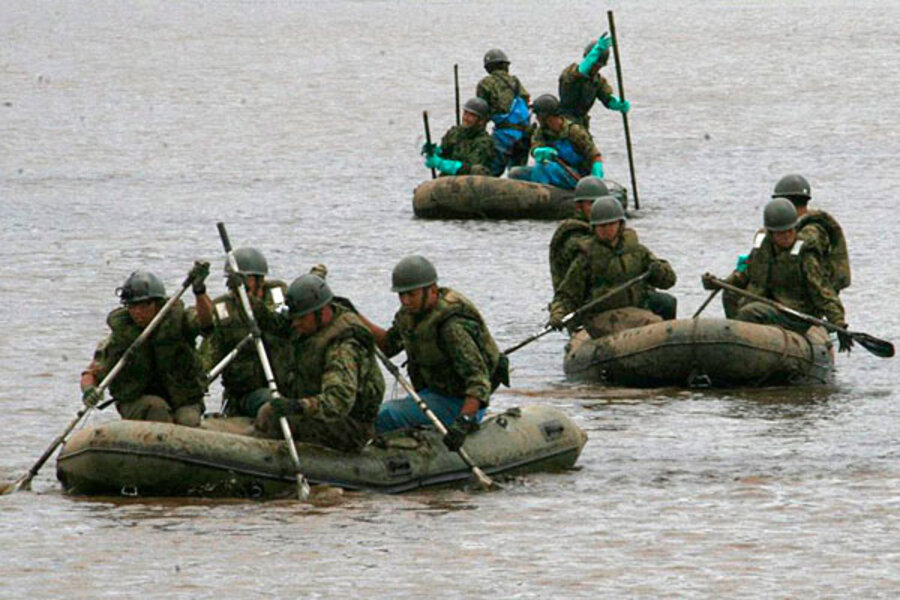Japan's low-profile military steps up during flood rescue
Loading...
| Tokyo
Japan’s once low-profile Self-Defense Forces (SDF), or military, has been at the forefront of the rescue operation after record rainfalls caused flooding that has left some 25 dead and seven more missing. These latest rescue efforts, combined with the SDF's response to last year's devastating earthquake and tsunami, are shining a more positive light on Japan’s military than it has seen in decades.
The worst-affected areas of Kyushu, the southernmost of Japan’s four main islands, saw as much as 32 inches of rain in what has been named the “North Kyushu Floods.” One mountainous area of Fukuoka Prefecture is still being airlifted supplies by the SDF, while thousands more remain in evacuation centers or without power. Up to 400,000 people were ordered or advised to leave their homes in Kyushu at the height of the storms over the weekend.
Images of torrents of water sweeping away houses and cars recalled memories of last March’s tsunami that took the lives of nearly 20,000 on the northeast coast of Japan’s main island. And as they did after that disaster, the SDF has been rescuing those stranded by the recent raging waters, searching for the missing, and clearing roads, drawing more positive reactions from a citizenry and media formerly wary of praising the military.
According to the protocols of Japan’s pacifist Constitution, effectively imposed on the defeated country by the United States after World War II, the SDF had to be officially invited by local authorities to aid in rescue efforts.
After the Kobe earthquake that killed nearly 6,500 people in 1995, it took four days for the SDF to be sent in – attracting widespread criticism and handing Japan's yakuza mafia a publicity coup by allowing them to be seen delivering food and supplies before the national government.
However, after the March tsunami, then-Prime Minister Naoto Kan quickly dispatched 100,000 troops to the disaster areas. Footage of the SDF’s rescue efforts provided a huge boost to its standing, as well as driving a surge in young people signing up for Japan’s armed forces.
Japan’s relationship with its men and women in uniform has been an uneasy one since the end of the war, and any reminders of the country’s militaristic past are generally avoided whenever possible. The SDF’s recent humanitarian work following natural disasters has gone some way toward breaking that taboo.
The SDF may have another opportunity to gain more kudos before the week is out. According to the Japan Meteorological Agency, typhoon No. 7, a powerful tropical storm, is currently making its way across the Pacific and is predicted to hit Kyushu on Wednesday.







